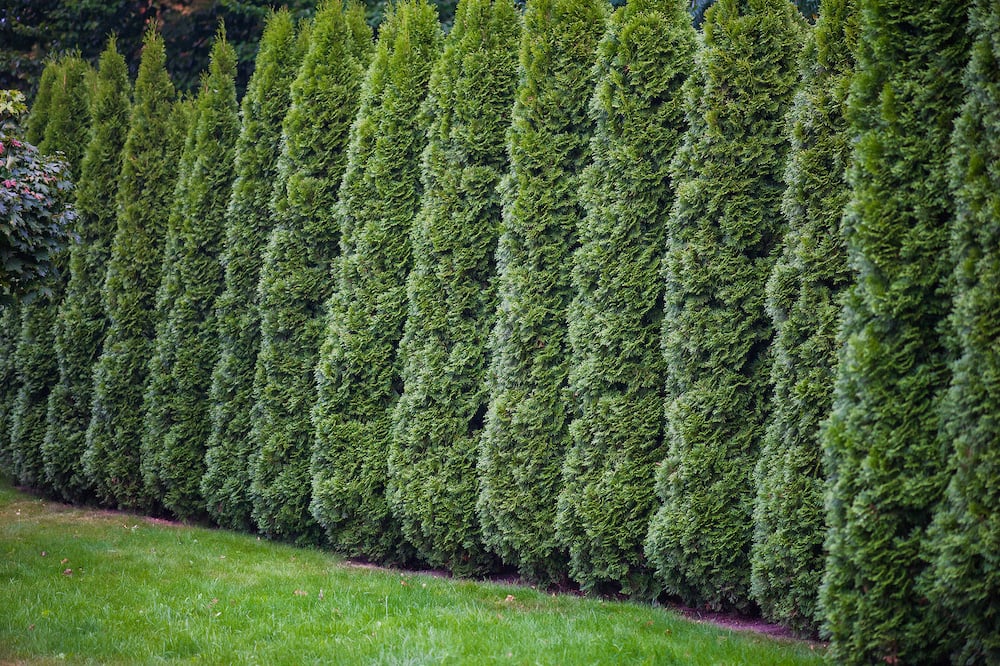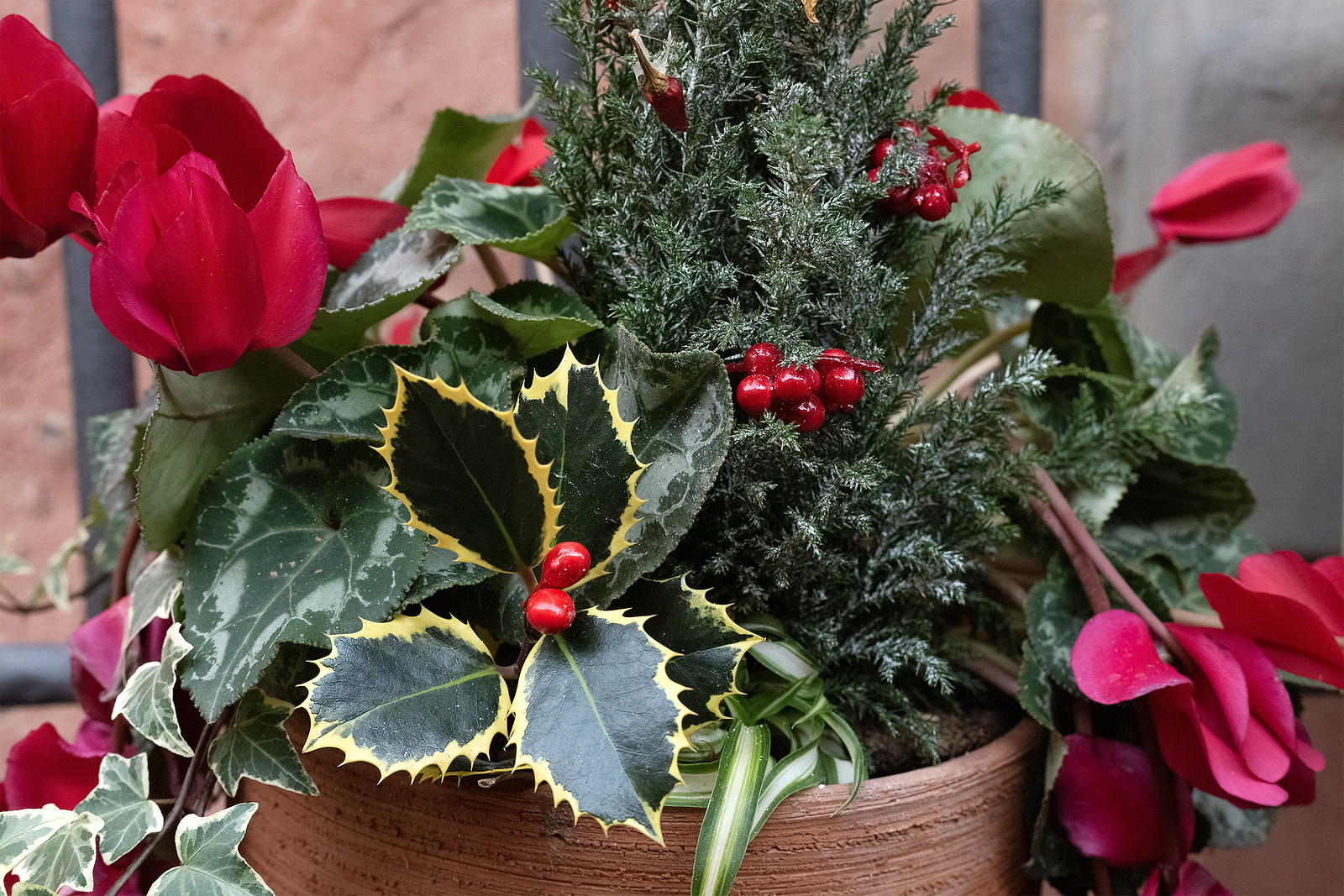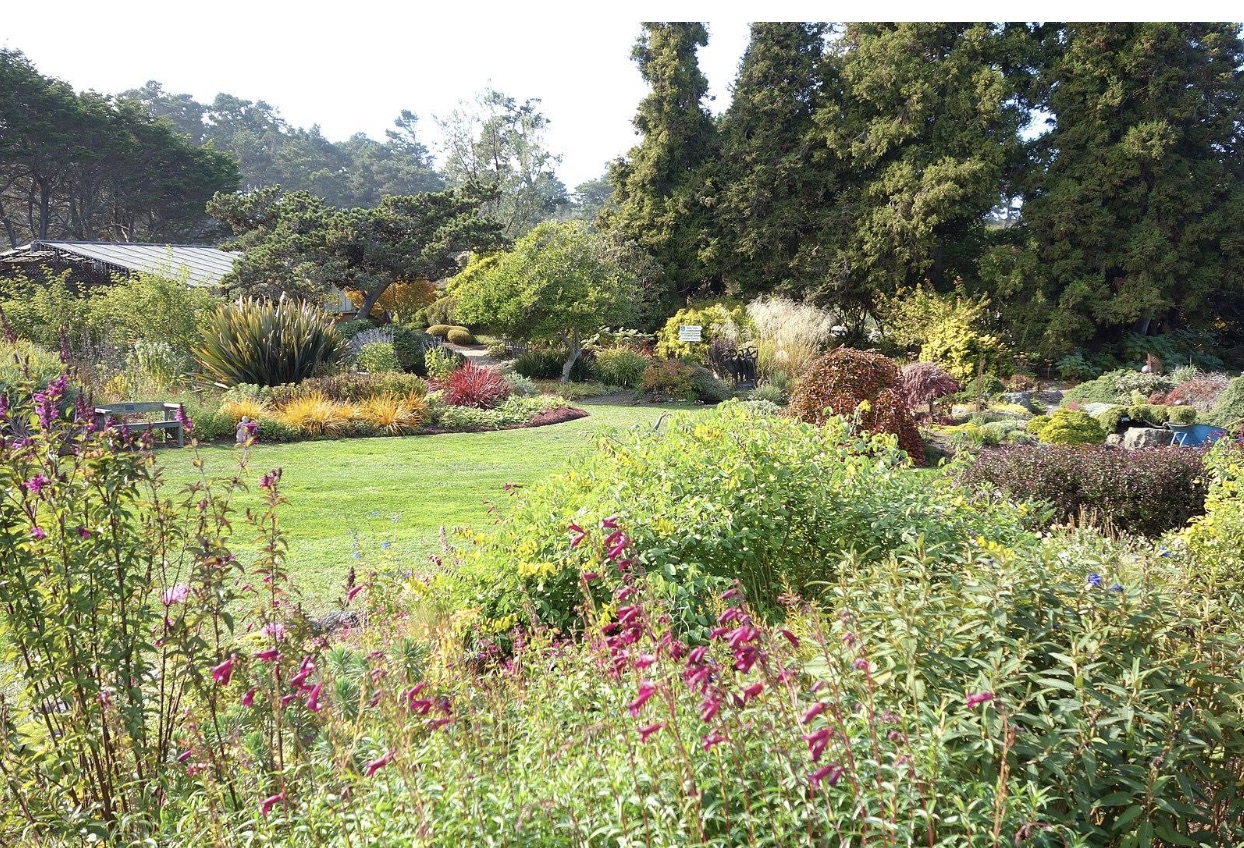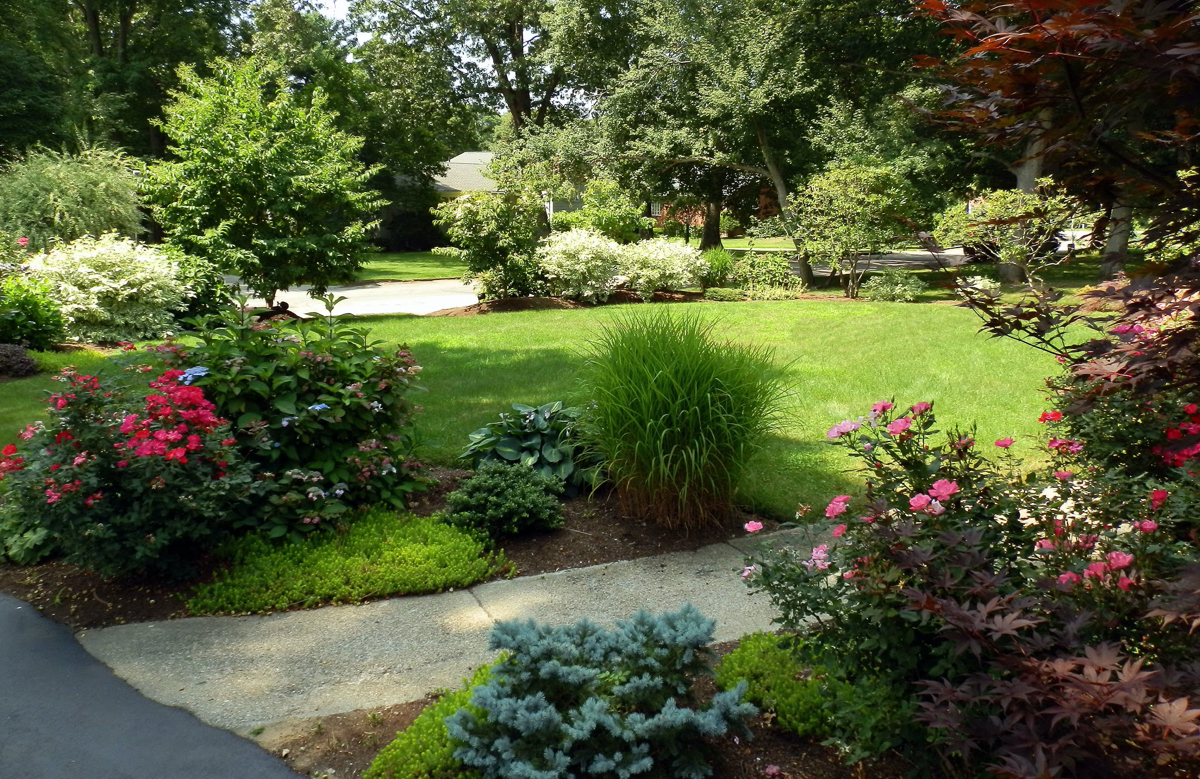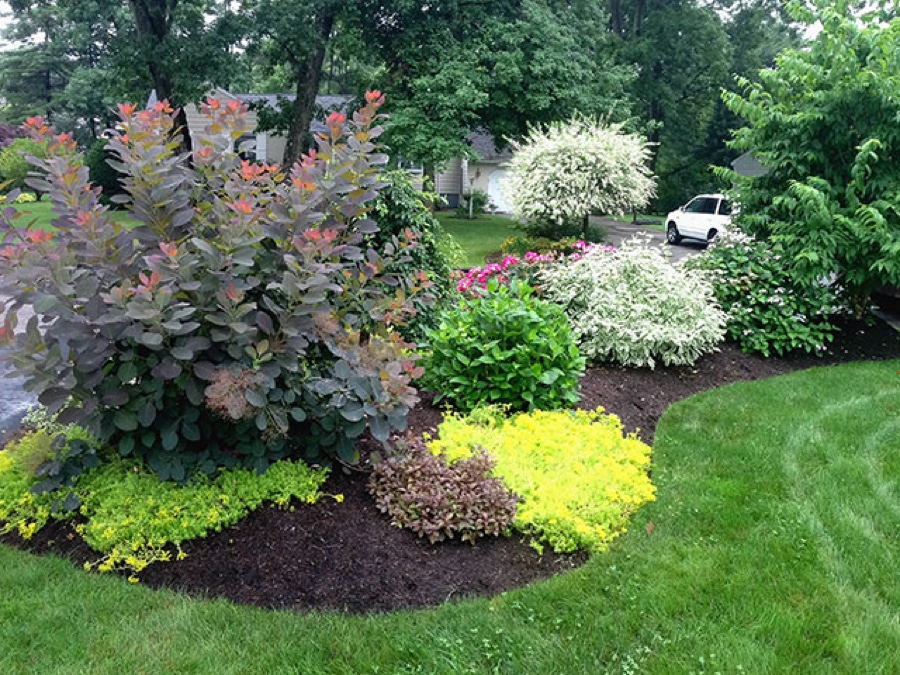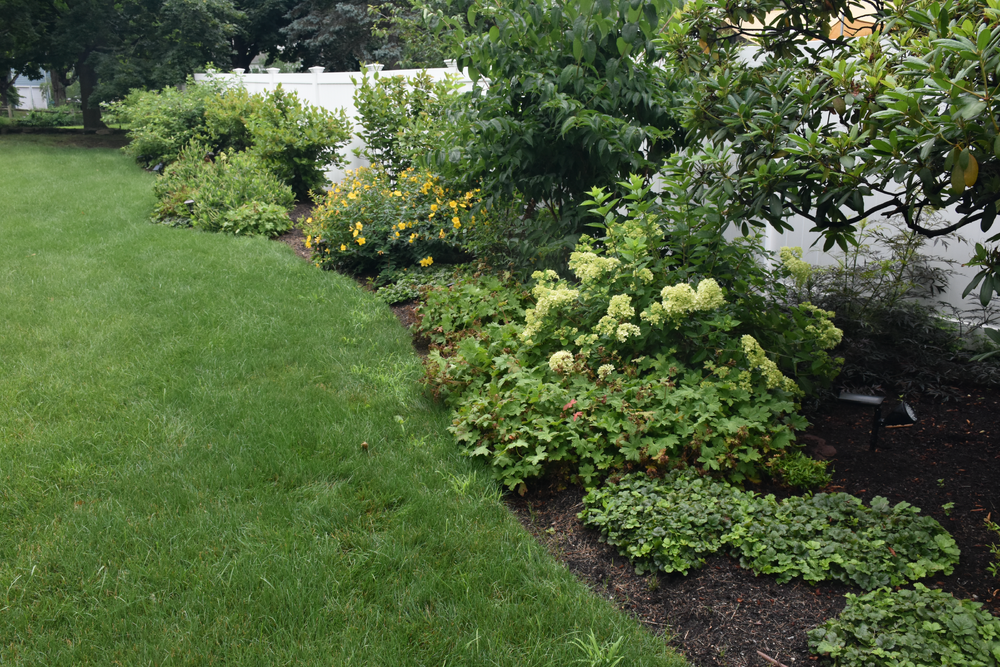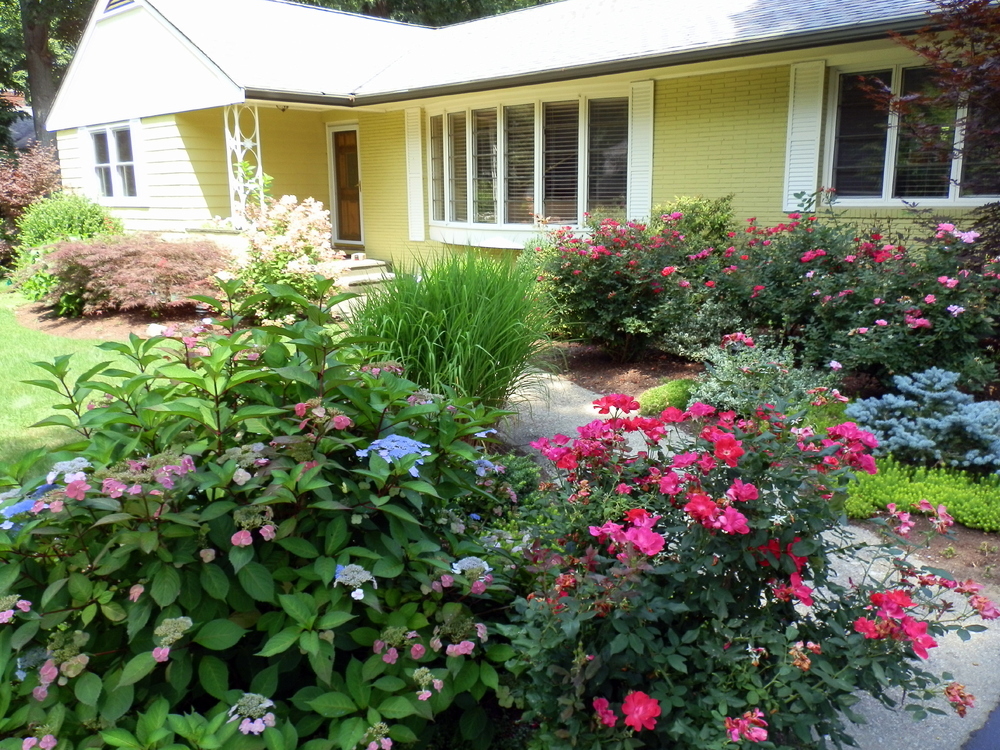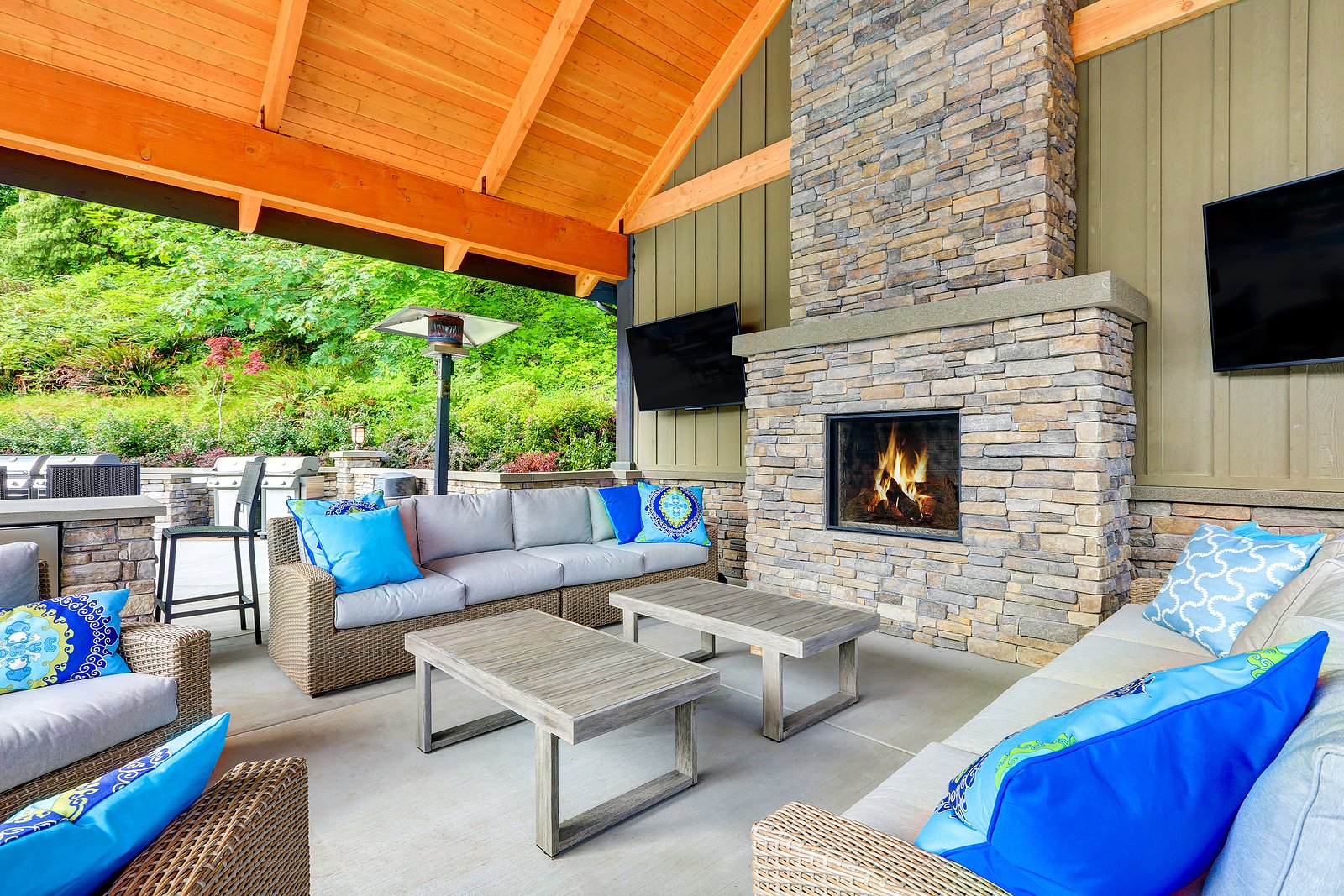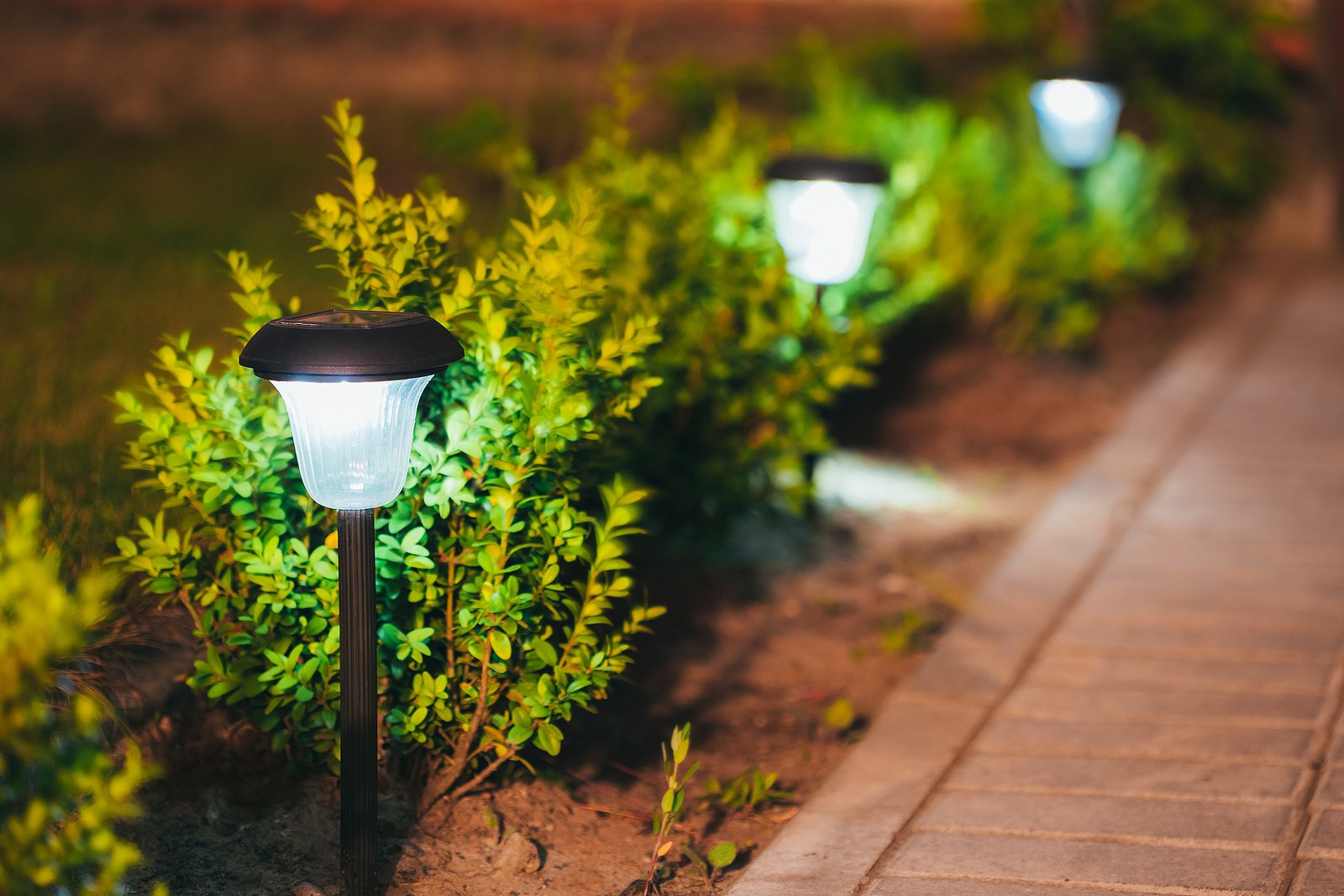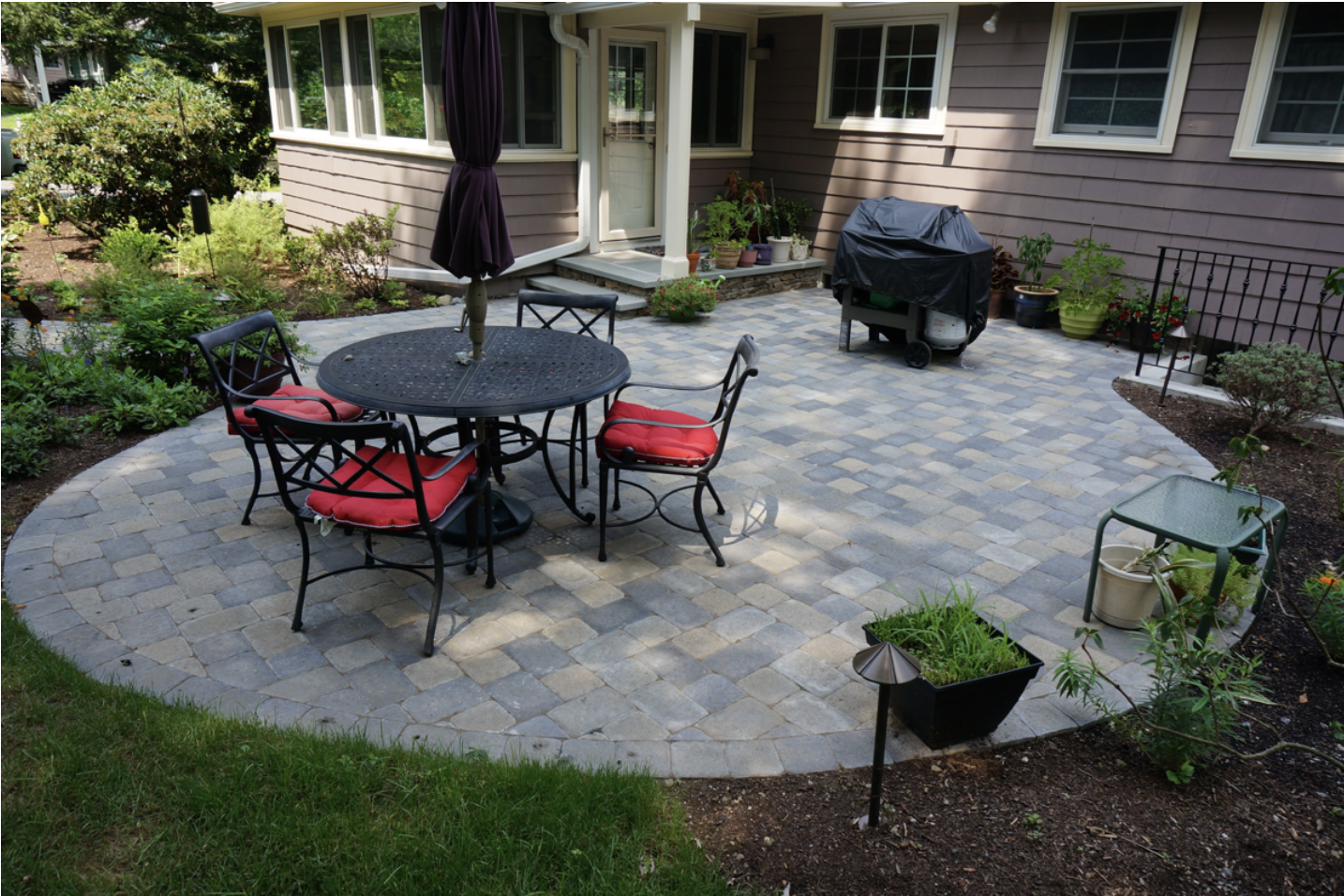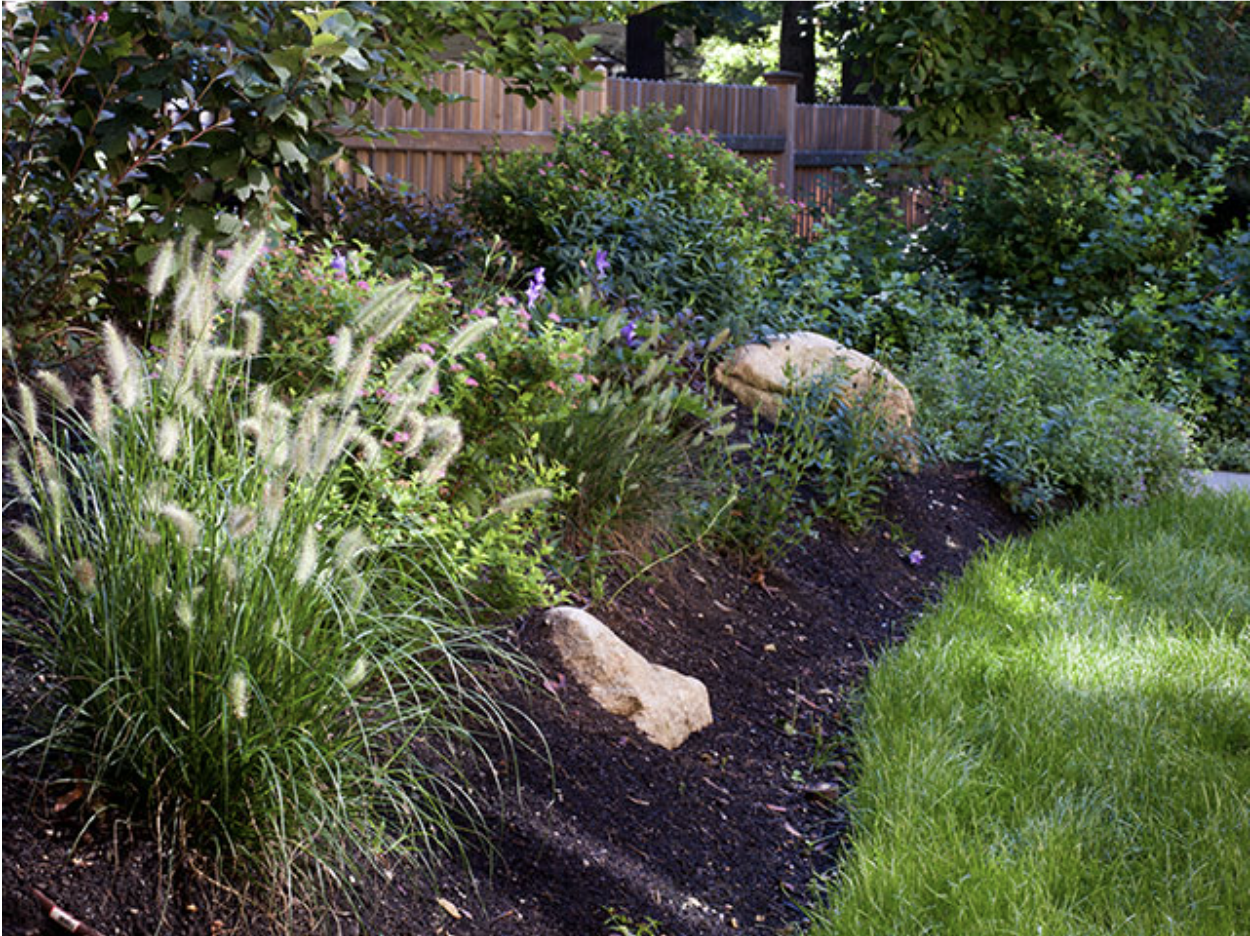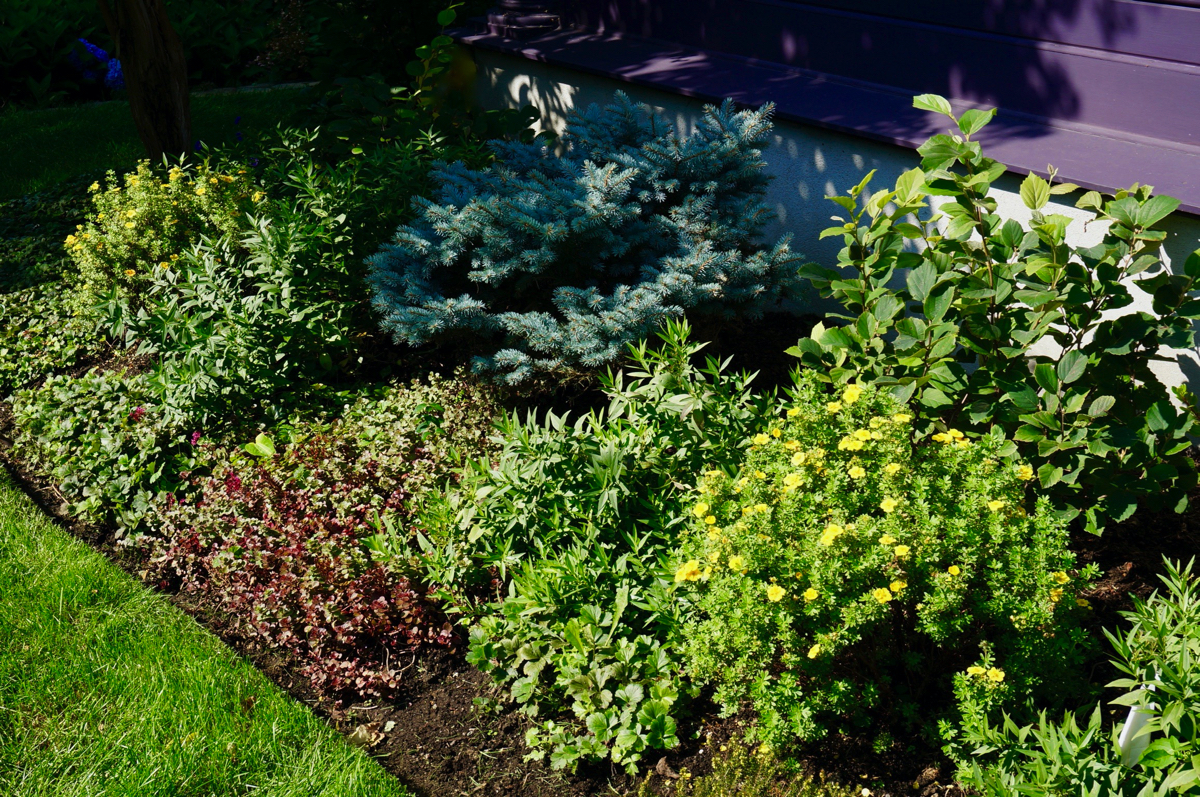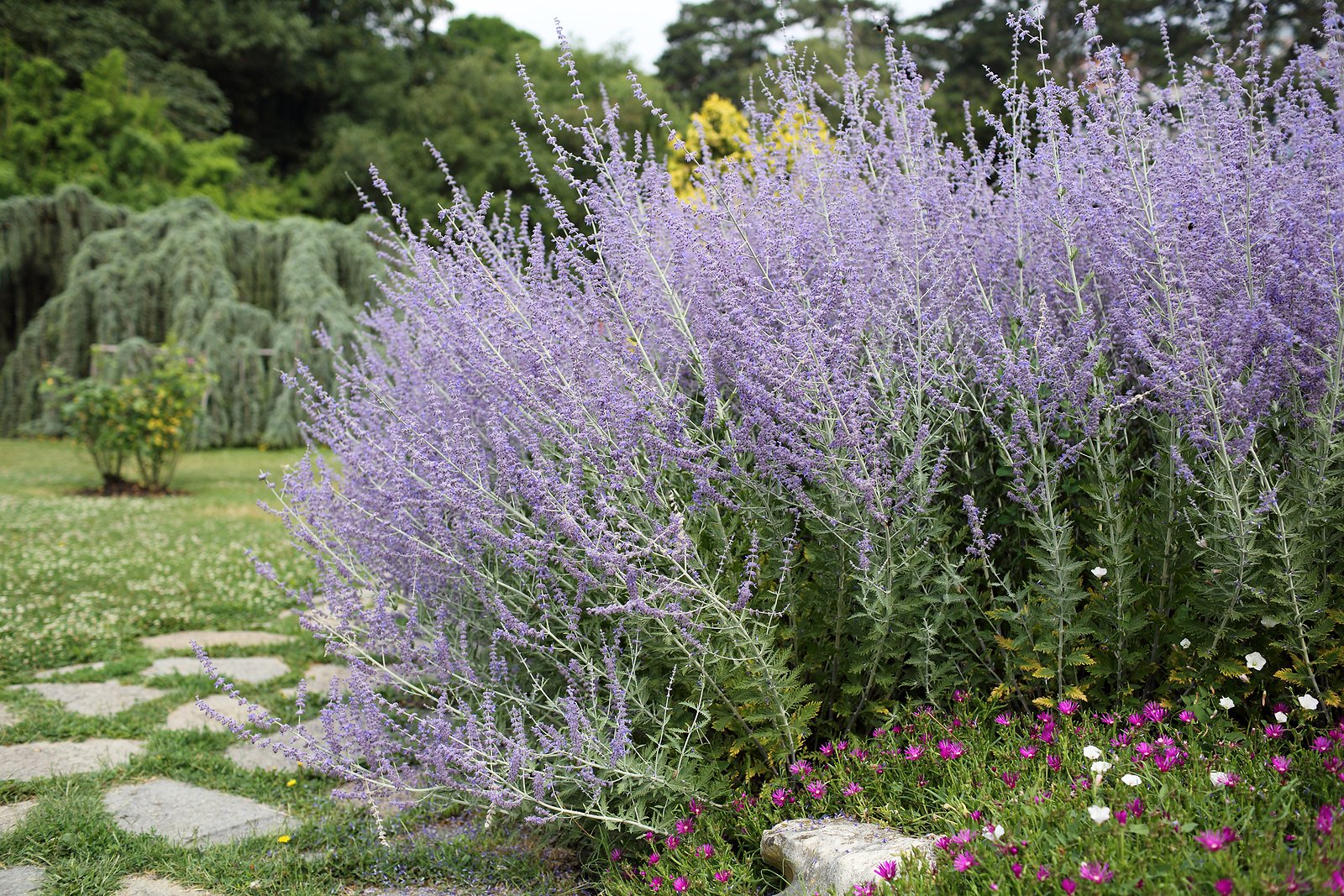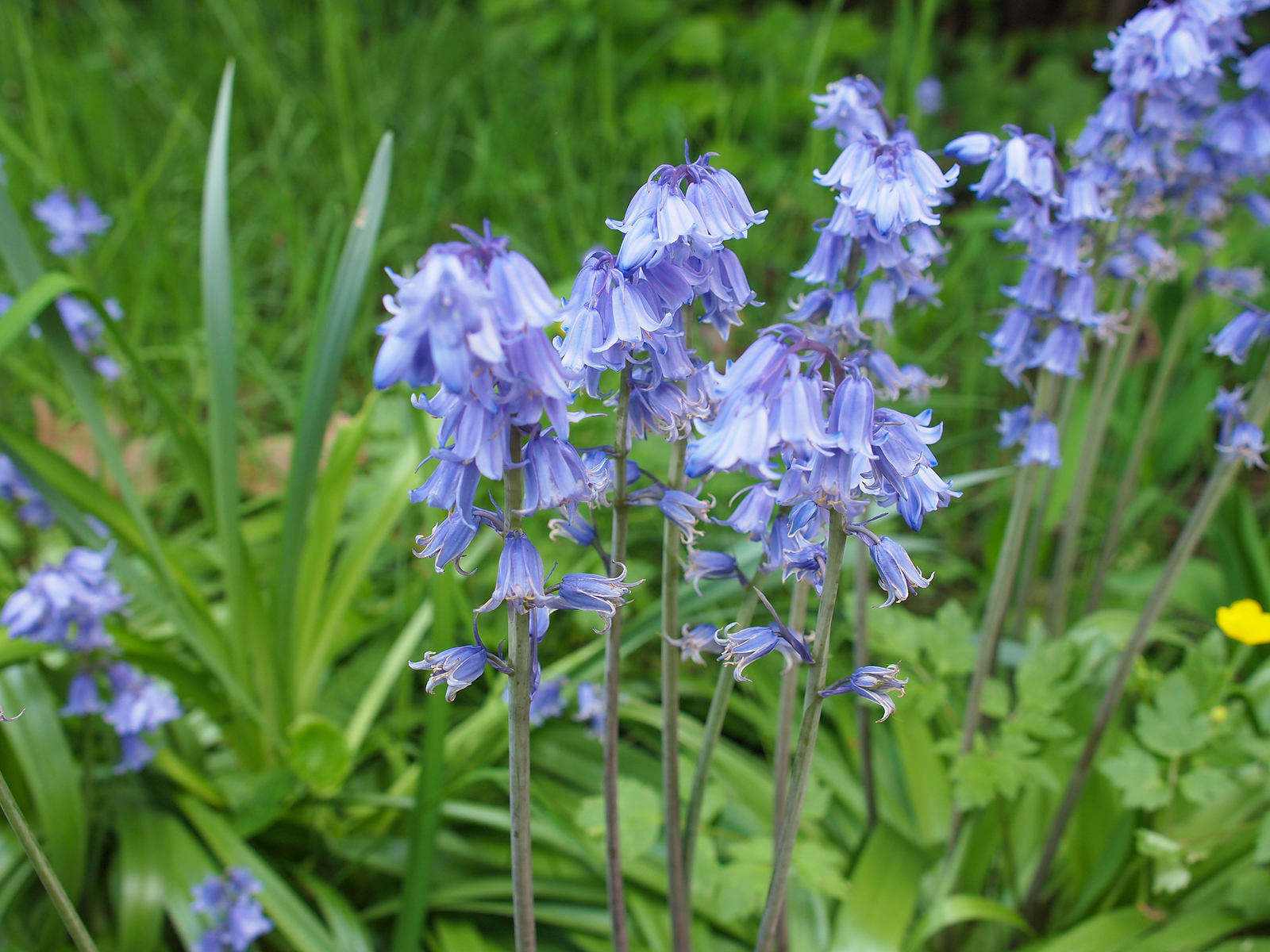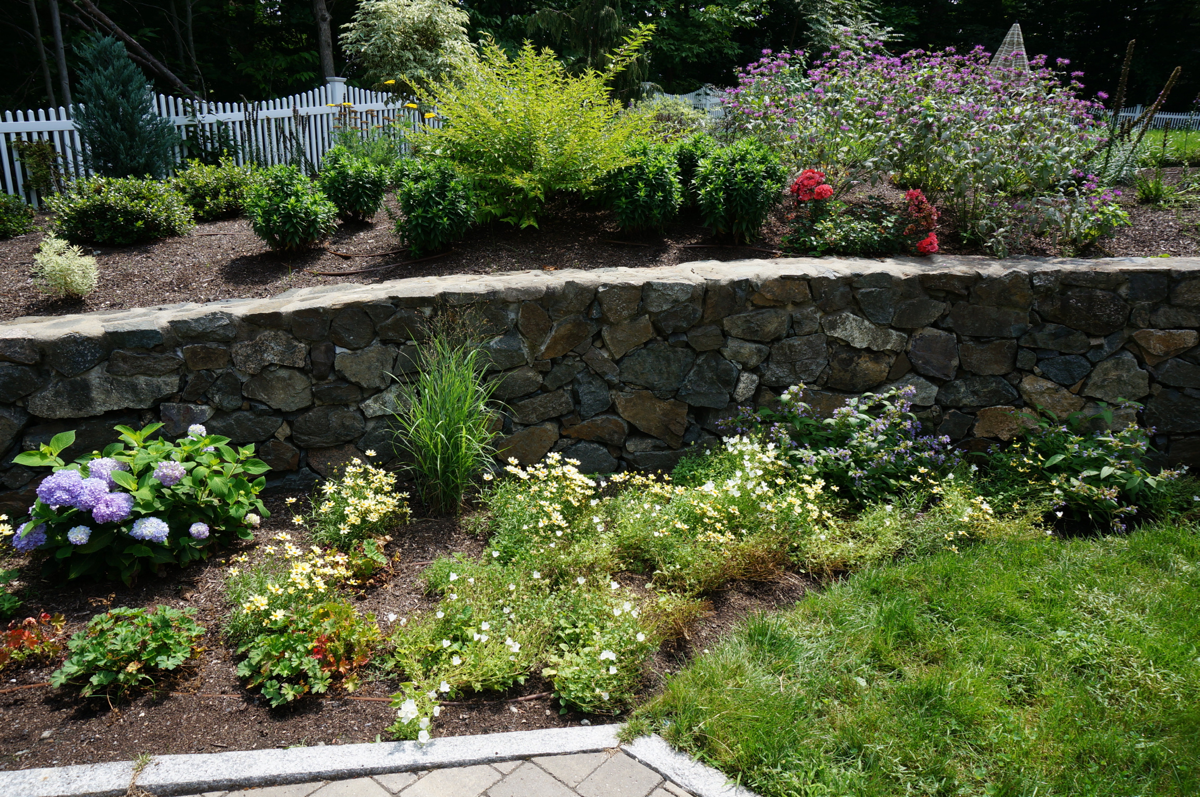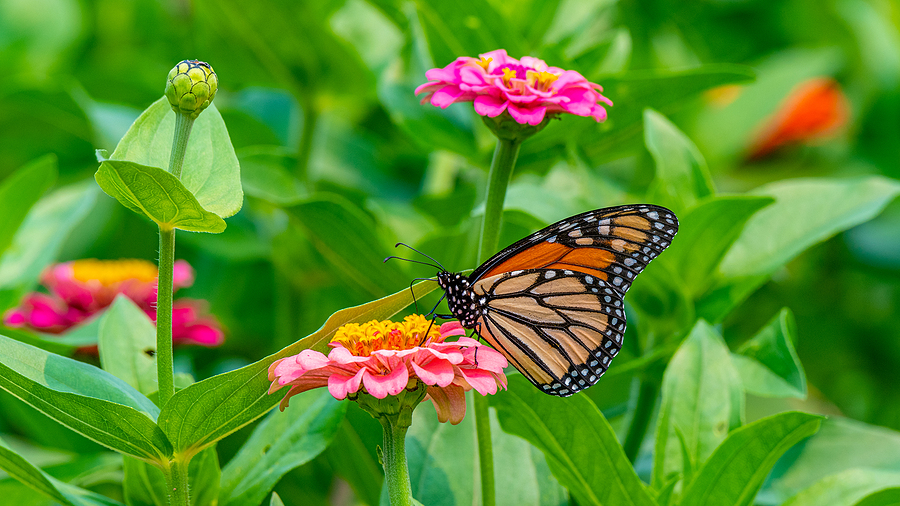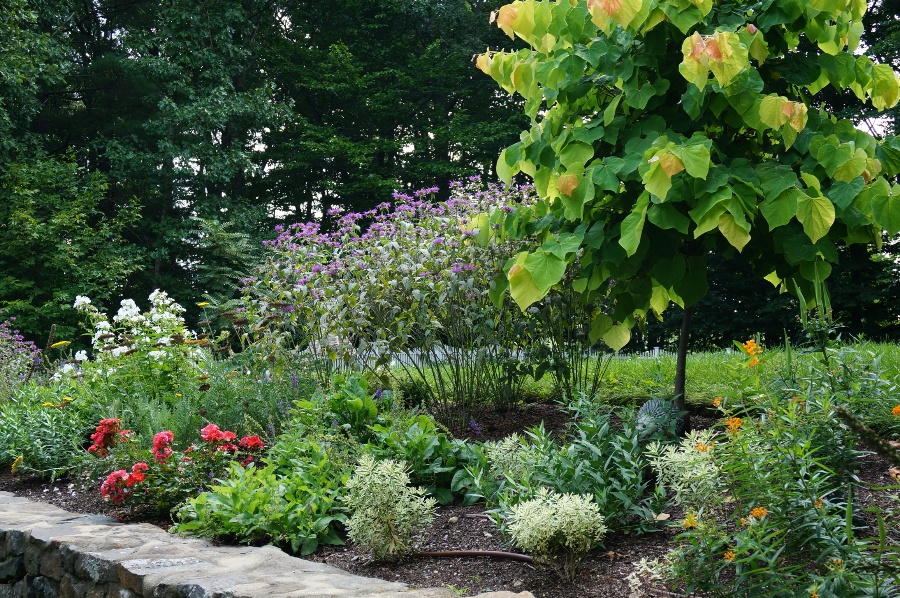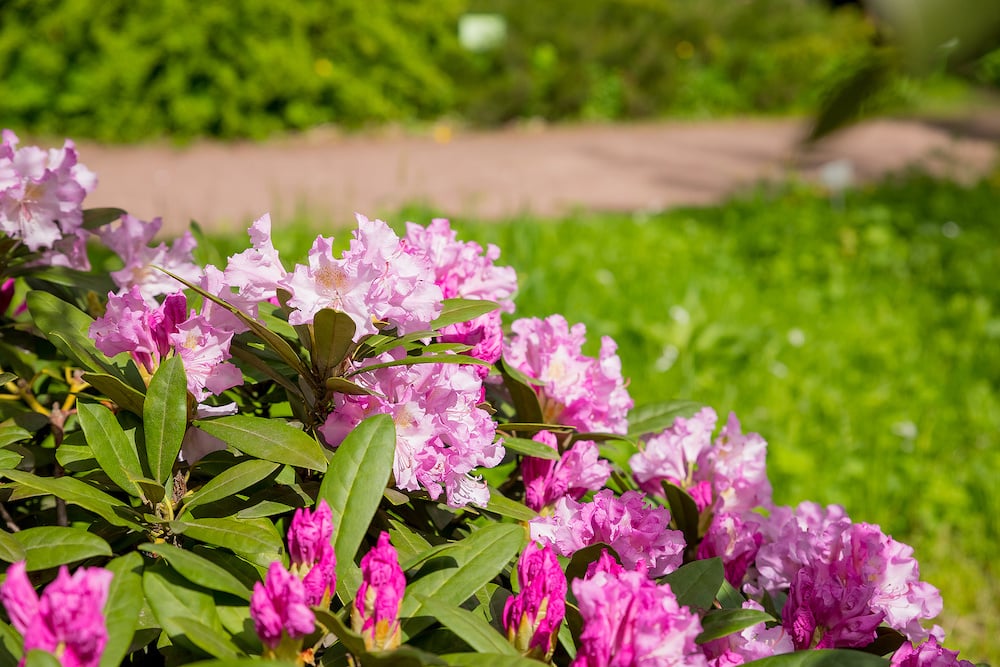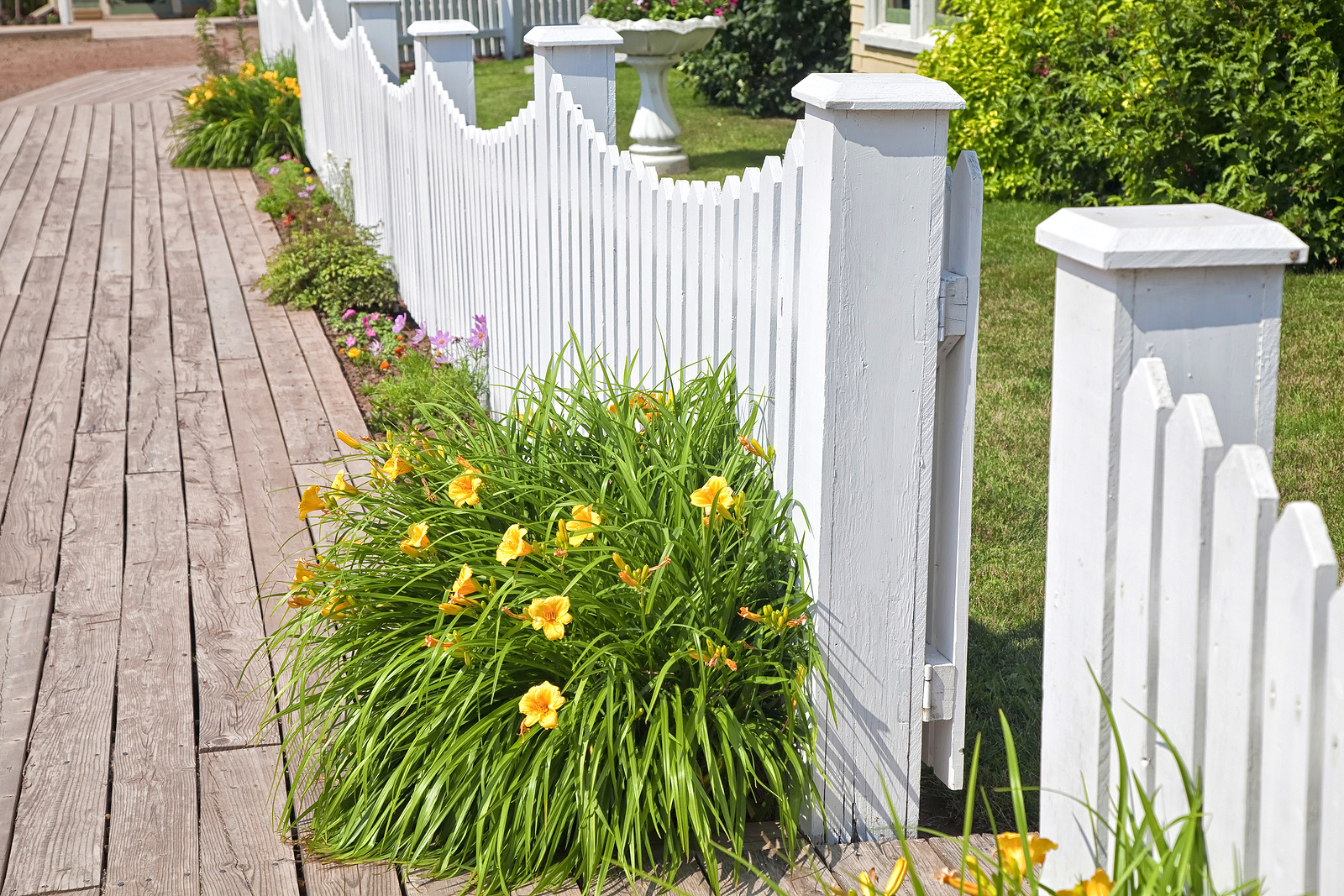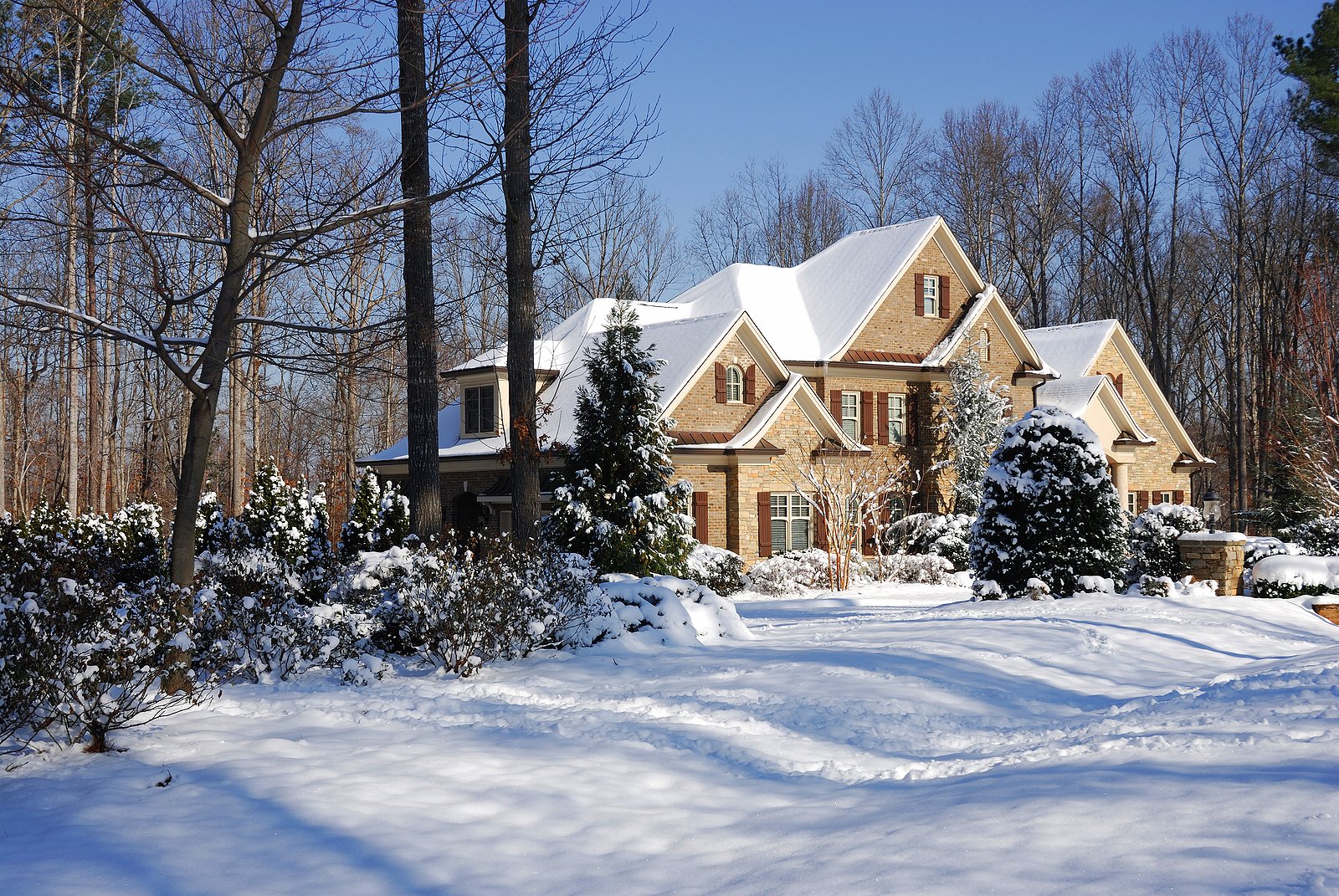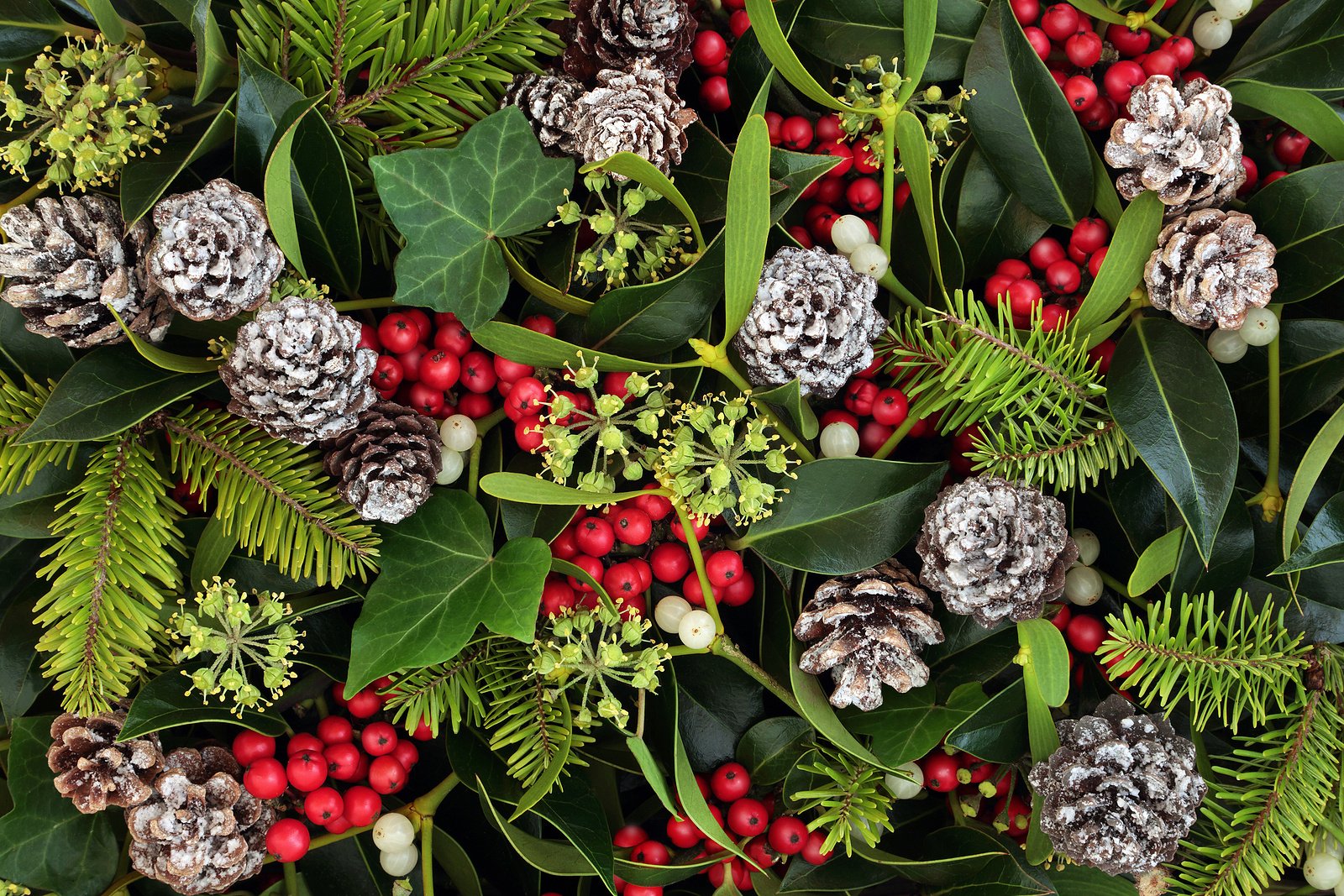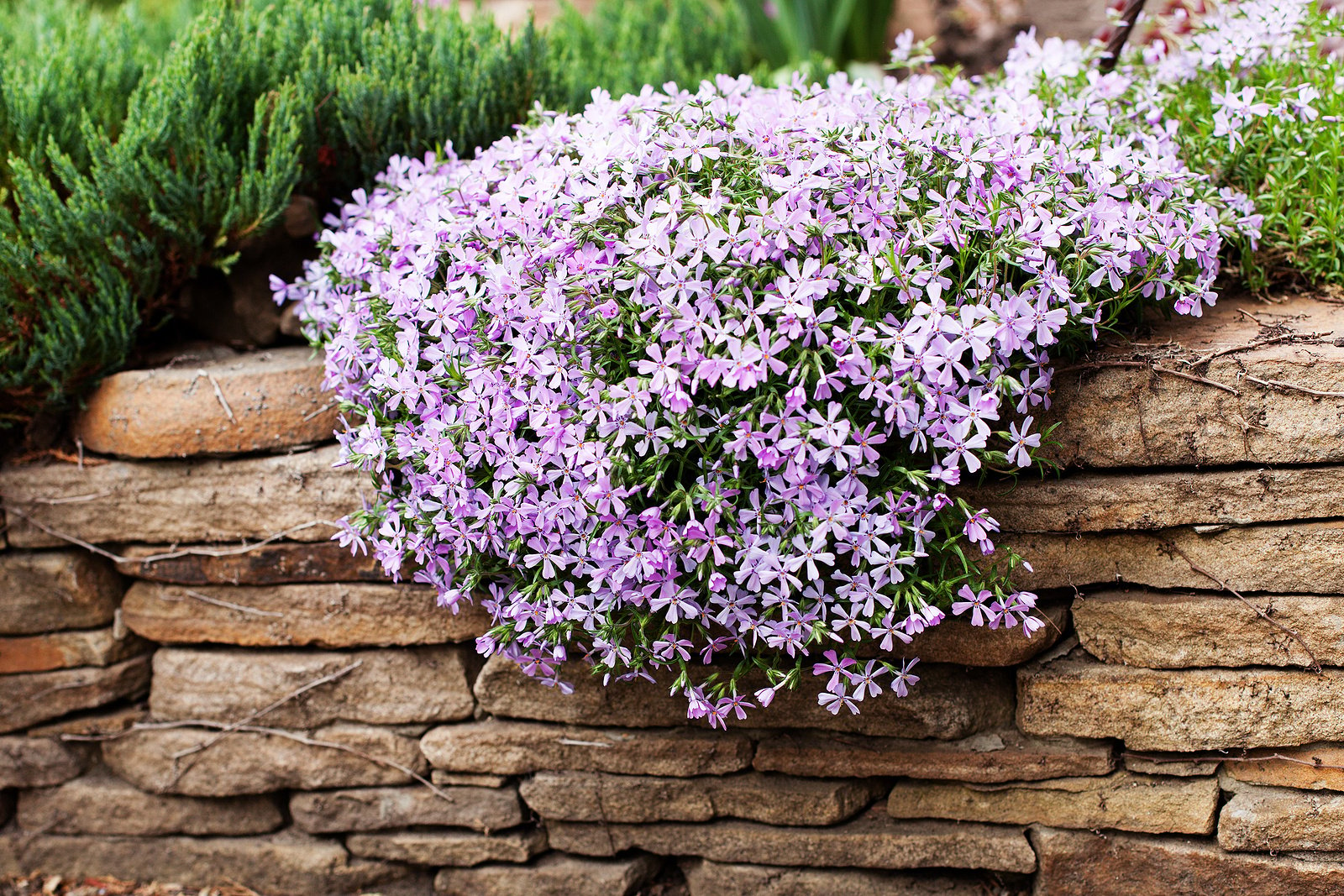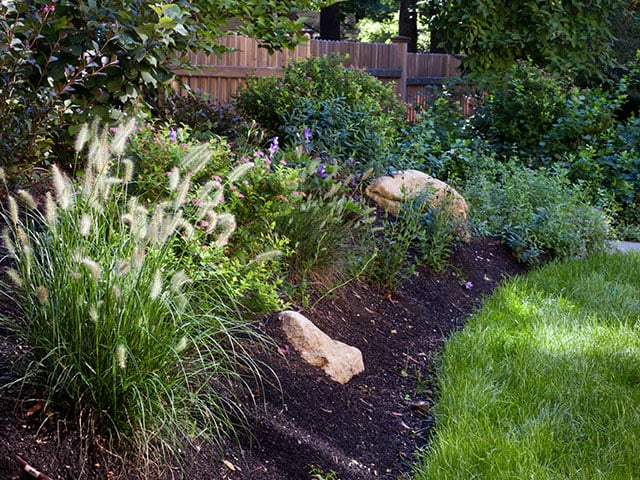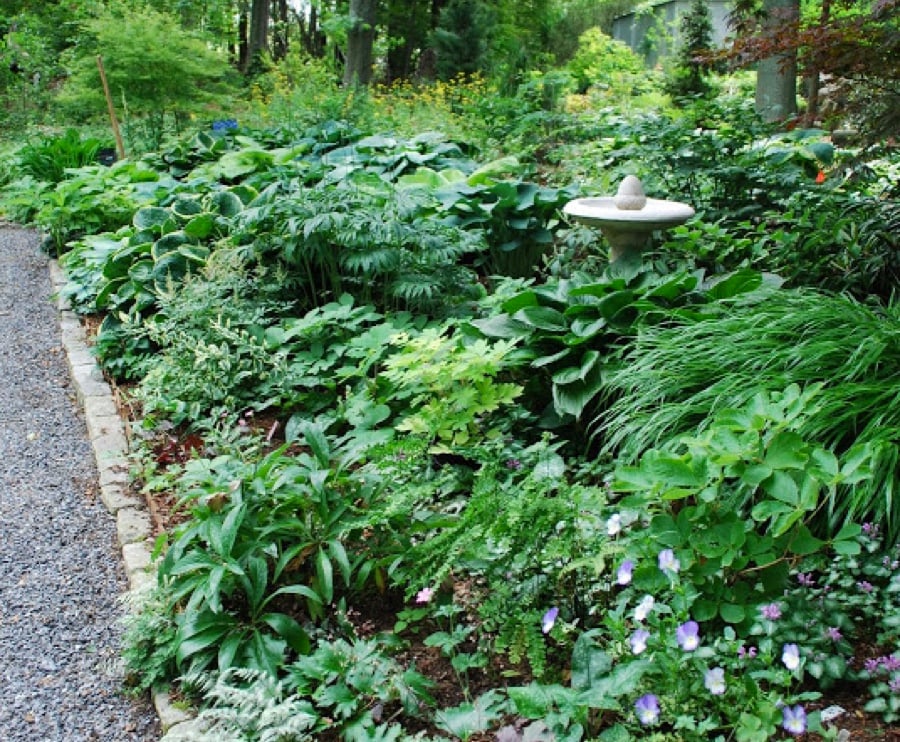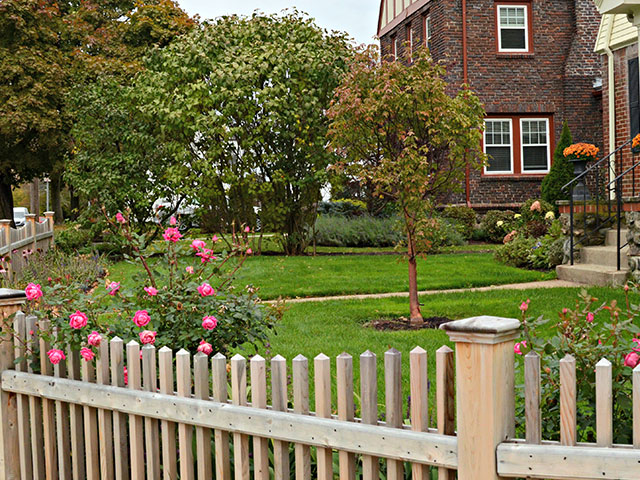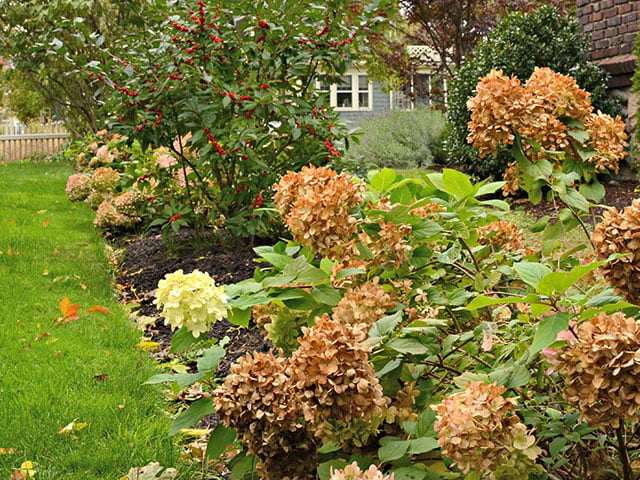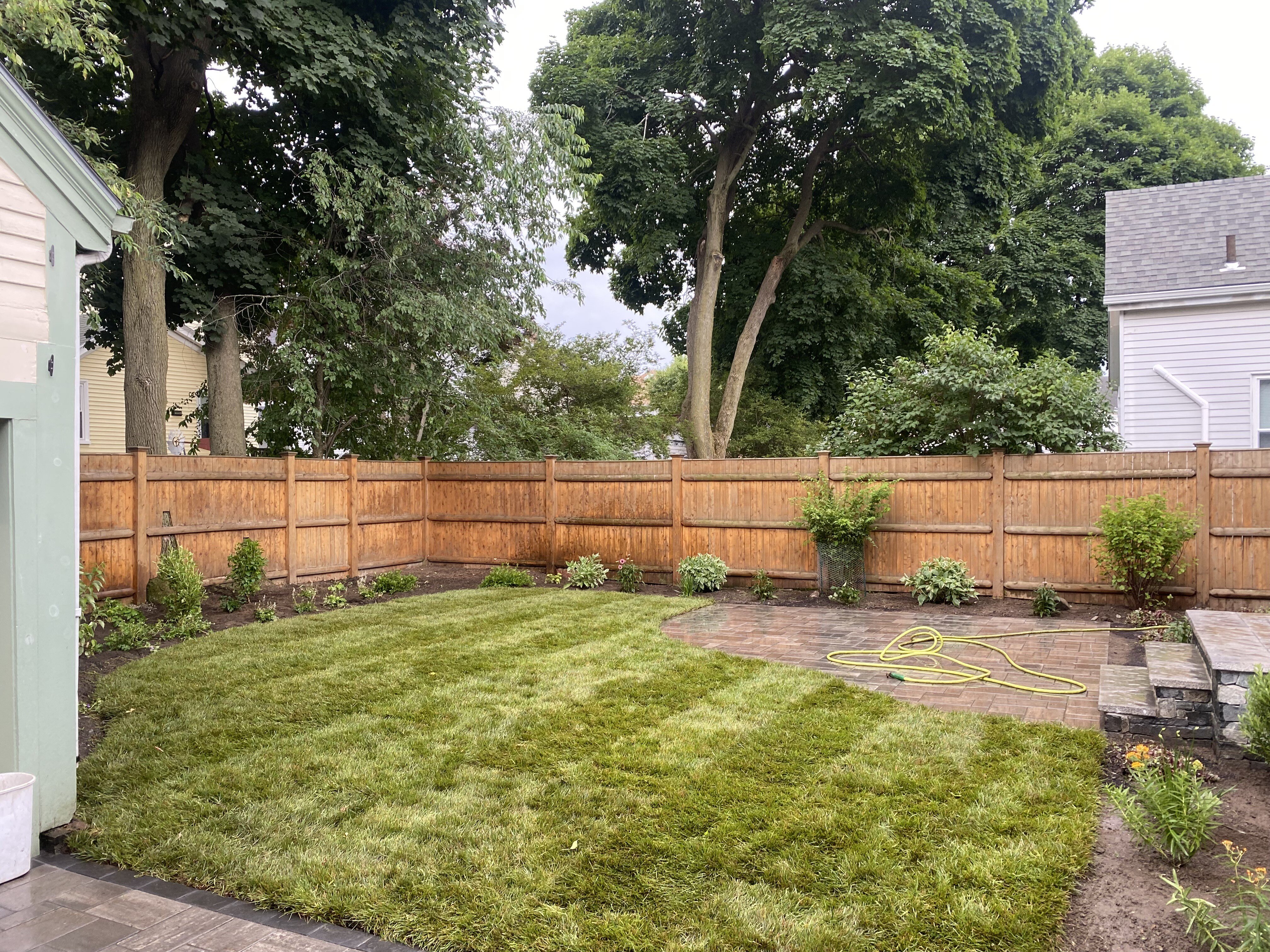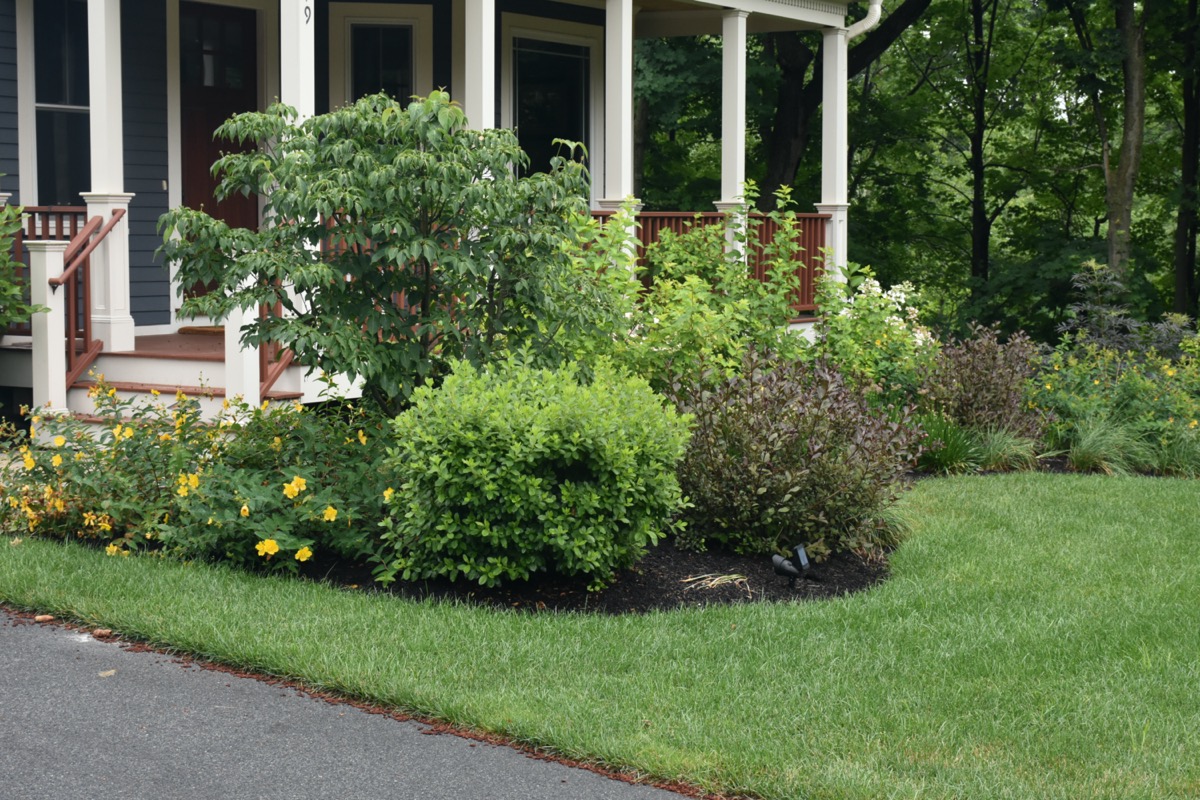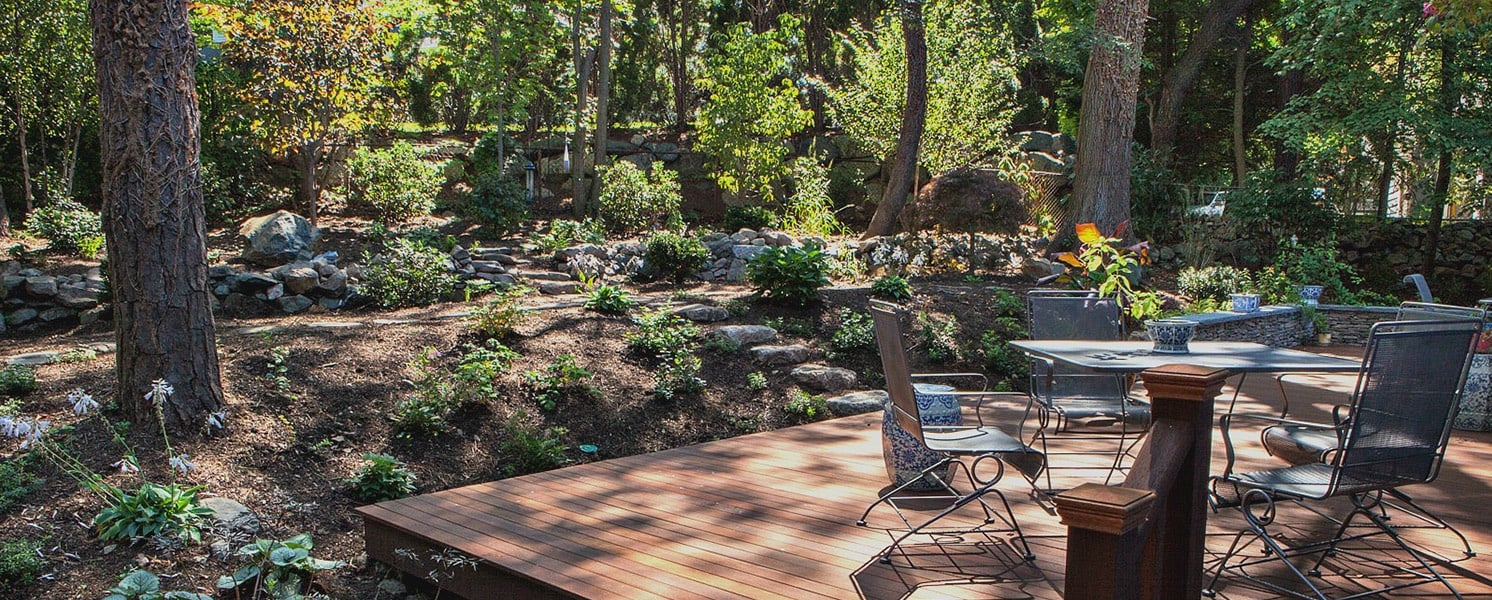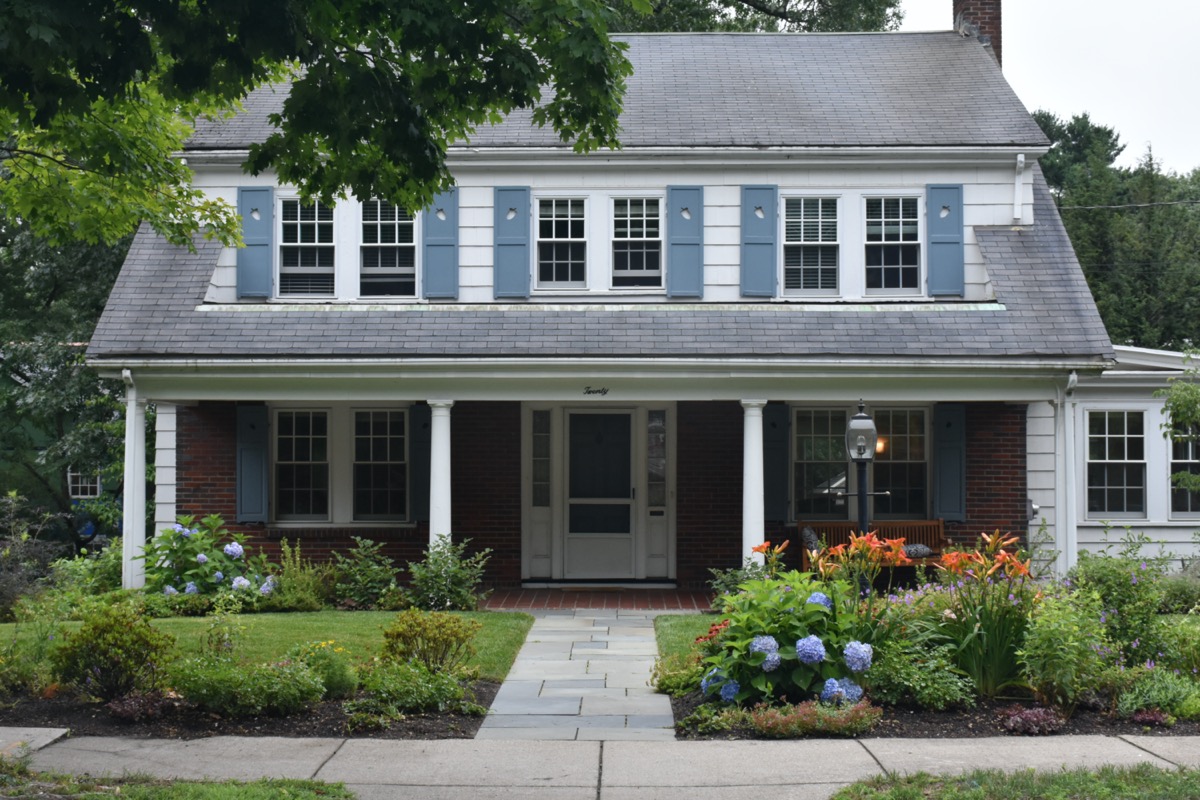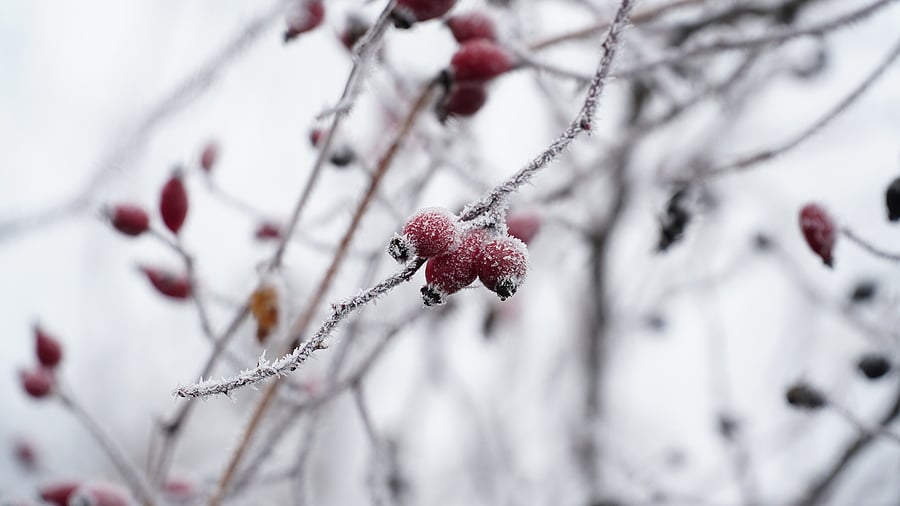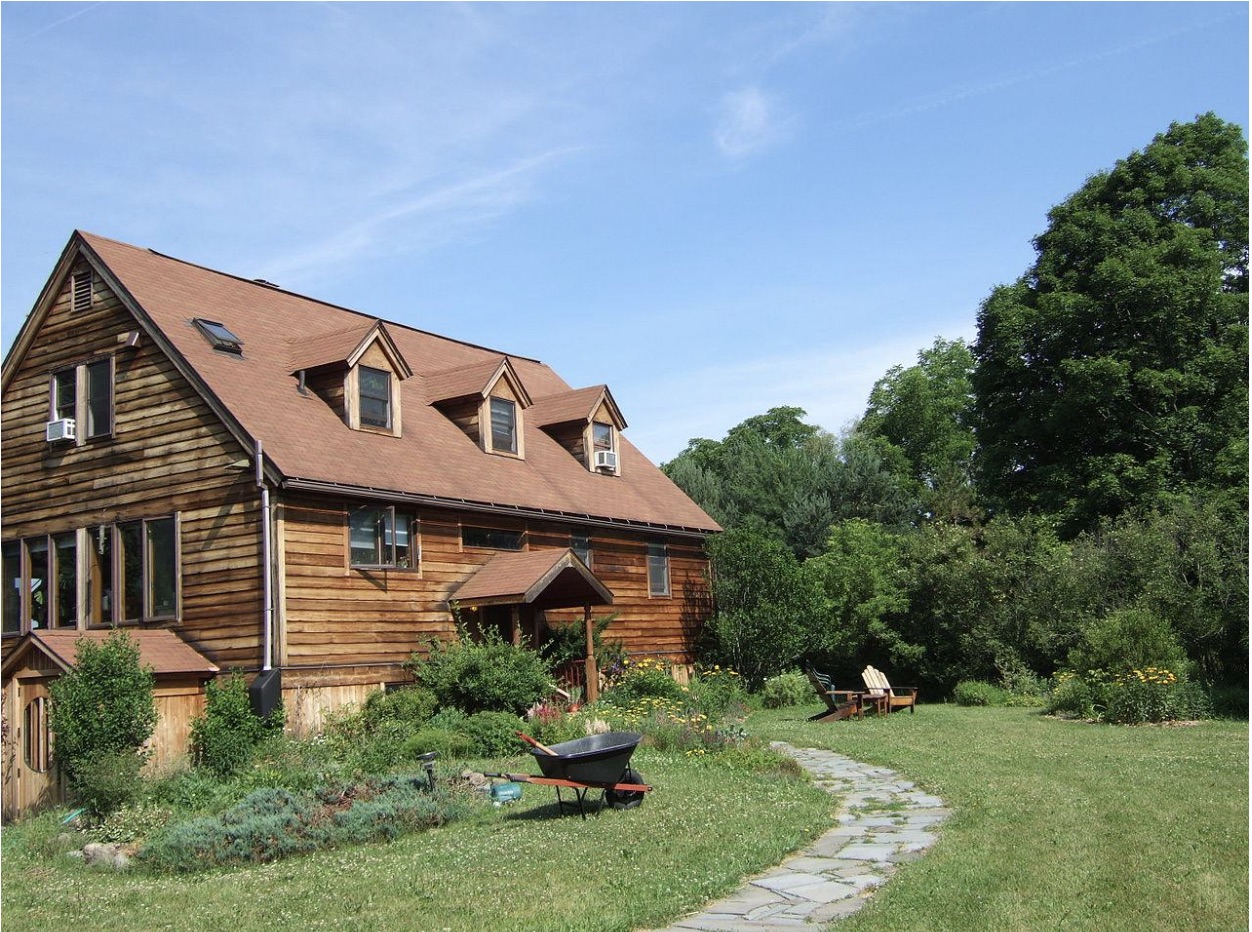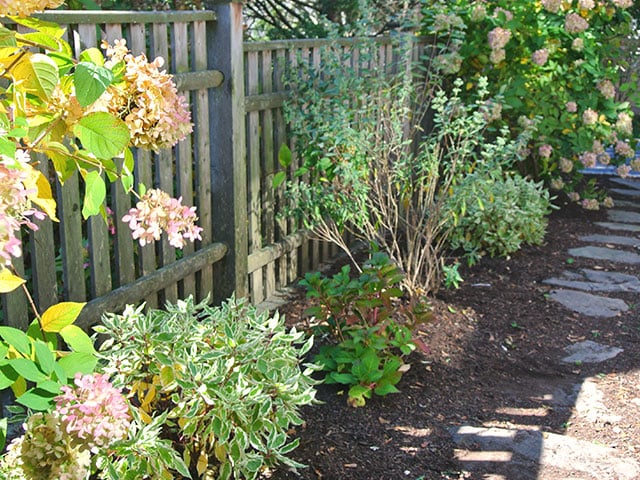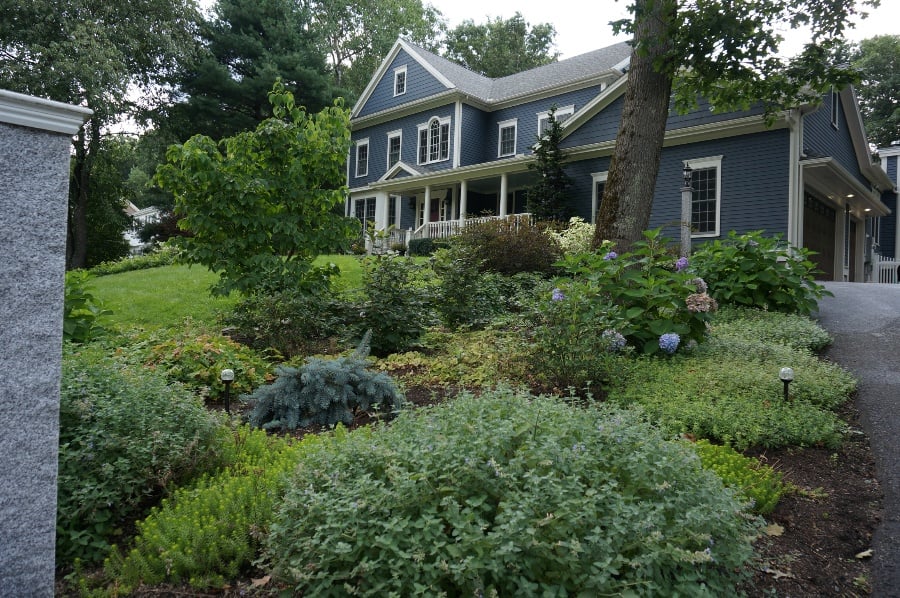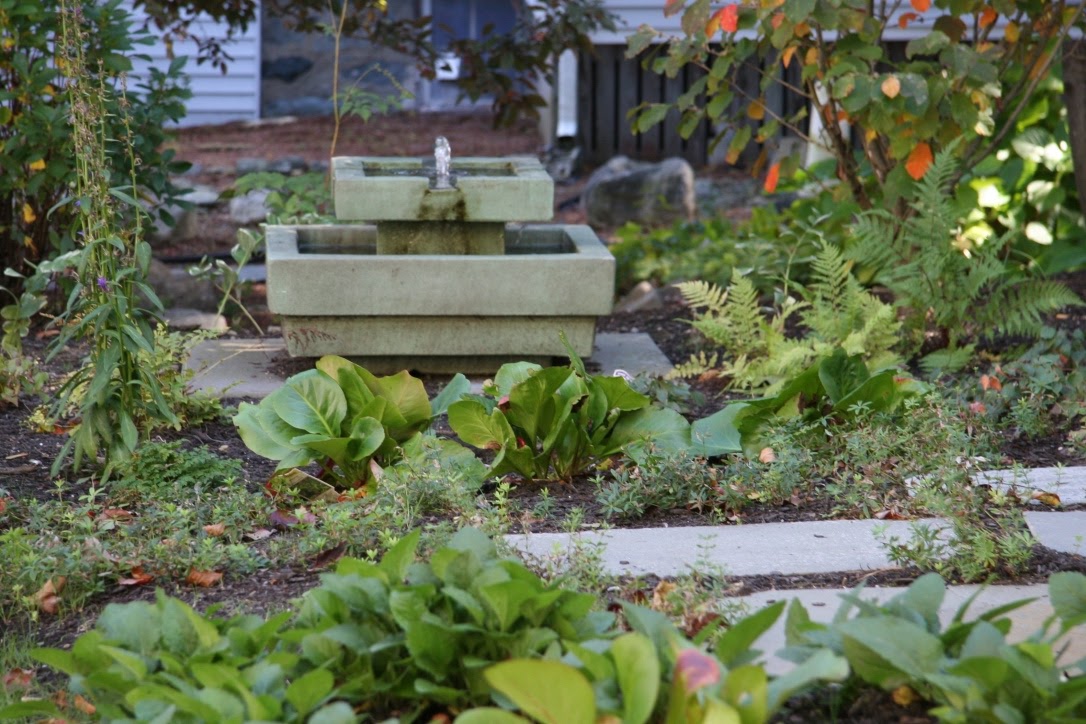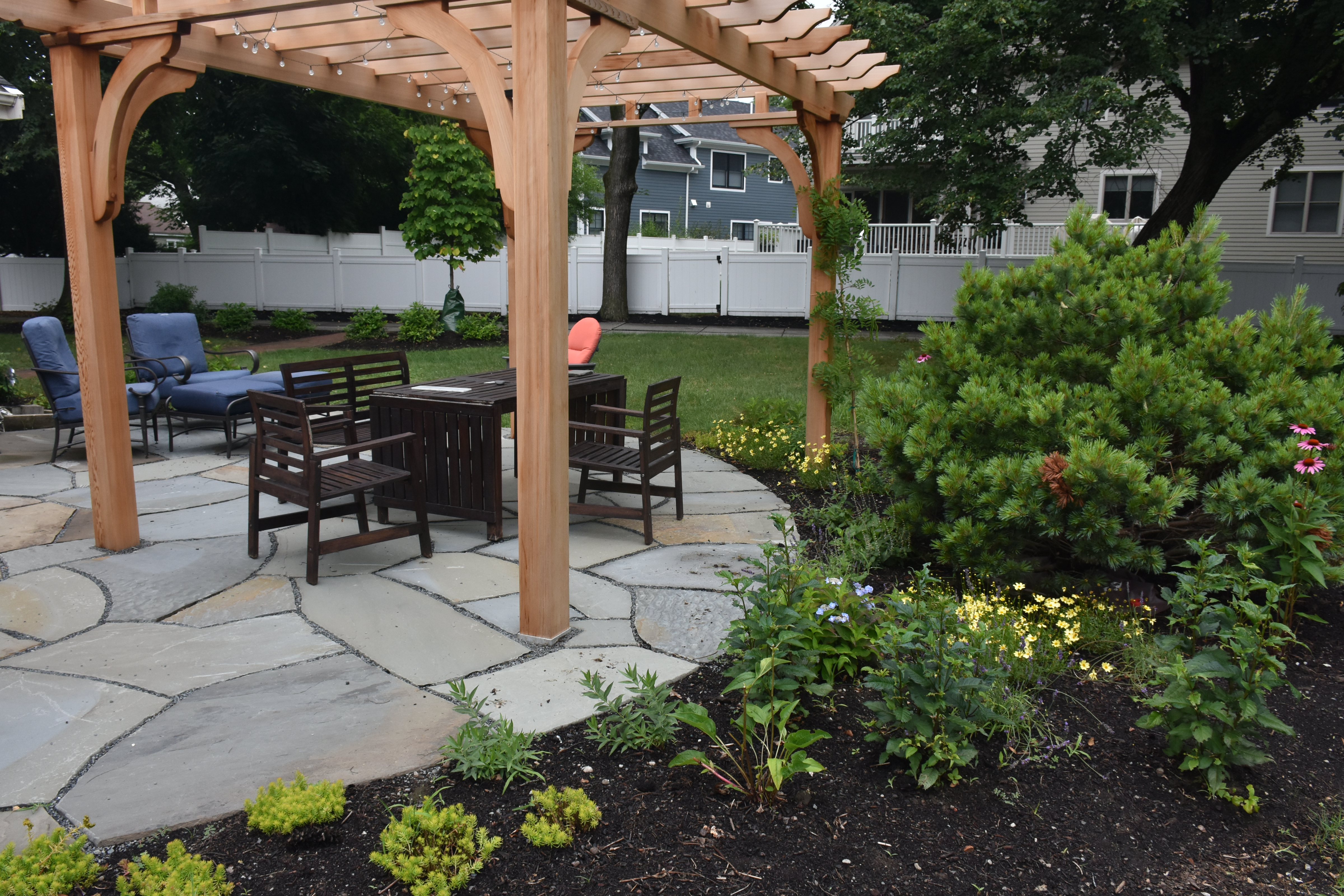Privacy trees can help your landscape feel complete, and create a peaceful sense of solitude in even the most densely-settled neighborhoods. There are several excellent options for fast-growing privacy trees for homeowners in Massachusetts. Determining which are the best trees for your yard will depend on several important considerations.
Important Factors for Choosing a Fast-Growing Privacy Tree
Amount of Sunlight Available
Determine how much sun the area for planting your privacy trees receives. Typically, an area of a landscape is considered to be full sun when it receives a minimum of six hours per day, while partial shade falls in between a minimum of three to six hours.
Some of the fastest growing trees — such as the green giant arborvitae and silver maple — will do best in full sun. Other species, like the American holly and Eastern white pine, thrive in partial shade.

When choosing fast-growing privacy trees, it’s particularly important to consider the recommended spacing between each tree. Otherwise, you run the risk of them crowding each other out, which can slow their growth — the exact opposite of what you hoped to achieve.
Other factors that can impact the growth of privacy trees can include the time of day they receive the most sun, how the amount of daily sunlight they receive can vary between seasons, and the differences in soil quality that can occur in sunny versus shady areas.
Watering Requirements
Fast-growing tree species often require more intensive watering than other varieties, so be prepared to water your privacy trees deeply and regularly.
Many fast-growing tree species, particularly evergreens, are drought tolerant. Nonetheless, it’s important to maintain a regular watering schedule when conditions are dry in order to maintain the desired growth rate.
It’s important to understand the soil type where you’re planting your trees. In sandy soil (as is commonly found both in Western Massachusetts and on and near Cape Cod), moisture drains more quickly and more frequent watering may be necessary. Clay soil will hold onto moisture longer, so be wary of the potential for root rot.

Be on the lookout for signs of dryness, including browning leaf edges and wilting. To boost your trees’ ability to retain moisture, consider adding a layer of mulch at the base. This will also help regulate the soil temperature.
Type of Tree
Evergreen trees include species of pines, cedars, spruces, and firs. Because evergreens hold onto their needles year-round, they function well as a privacy fence in all four seasons and reduce the need for fall yard cleanup.
In addition to visual cover and windbreaks, evergreens will offer shade and a natural sound barrier throughout the year. Evergreens also do better in hot weather and are more drought tolerant, as their needles hold onto moisture.

In contrast, deciduous species (such as maples, oaks, and willows) allow for more light to pass through during the winter months after they lose their leaves. The look of a landscape populated with deciduous trees will vary according to the season. For example, some species may flower in spring, providing beautiful blossoms that add color to your landscape.
Deciduous trees can provide critical habitats for local wildlife, especially in winter. Their shallow root structures make them better options for planting near existing structures.
Growth Habit
The growth habits of fast growing privacy trees offer many benefits. Rapid vertical growth is of course the number one desired trait when designing a privacy screen.
The bigger and broader leaves of fast growing species will help a tree maximize food production, thereby maximizing growth. These species often have flexible branches that can enable them to spread rapidly.

The maturity cycle for fast growing species is much shorter than other species. Consider the desired height of your privacy screen, and which tree species’ mature size will meet that threshold.
For a shorter privacy hedge, species that grow horizontally or have a bushier shape, like small trees or evergreen shrubs, will be sufficient. For a higher privacy fence, look for vertical/columnar growth, as with some evergreens and cypresses.
Proximity to Structures
Plantings must always take into account what existing structures are in the area, but especially when planting fast-growing privacy trees. Trees can create their own microclimate, influencing the amount of wind protection, shade and moisture in a given area. It’s important to take into account how the leaves, roots, and size of your trees will impact what is nearby.

To start, fast-growing trees tend to have more complex root systems, so planting them without consideration for existing structures can have negative consequences. Be mindful of disrupting foundations, driveways, sidewalks, retaining walls and underground utilities. Similarly, the canopy of the tree can impact your roof, gutters or nearby power lines.
Your local zoning requirements or homeowner association regulations may also dictate what tree species are able to be planted and at what distance from existing structures. Be sure to review any relevant regulations prior to choosing which trees you’ll be planting.
The Best Fast-Growing Privacy Trees
Green Giant Arborvitae (Thuja standishii x plicata)

Green giant arborvitaes are large, fast-growing evergreens that provide dense foliage and a solid windbreak once mature. Its pyramidal shape requires very little pruning, making it a low-maintenance option.
Growth Rate per Year: 3 to 5 feet
Full Height at Maturity: 30 to 60 feet
Leyland Cypress (Cupressocyparis leylandii)

The Leyland cypress is a more slender option with a large growing zone. Known for its hardiness, these trees provide a year-round privacy fence.
Growth Rate per Year: 3 to 4 feet
Full Height at Maturity: 40 to 60 feet
Willow Hybrid (Salix alba x Salix matsudana)

Unlike weeping willows, the willow hybrid has an upright shape. This tree grows quite well in locations with a lot of moisture such as near a pond or stream or in low-lying areas, but does require full or partial sun.
Growth Rate per Year: 6 to 10 feet
Full Height at Maturity: 50 to 75 feet
Nellie Stevens Holly (Ilex x 'Nellie R. Stevens')

The Nellie Stevens holly offers some choice, as it can either be grown to its full height as a small tree or pruned into a full hedge. Nellie Stevens holly retains its green leaves year-round, ensuring privacy into the winter months.
Growth Rate Per Year: 2 to 3 feet
Full Height at Maturity: 15 to 25 feet
American Sycamore (Platanus occidentalis)

One of the largest trees in America, this species grows both tall and wide. Be sure to leave ample room for growth when planting. American sycamores make excellent shade trees and can survive for up to hundreds of years.
Growth Rate per Year: 3 to 6 feet
Full Height at Maturity: 75 to 100 feet
Silver Maple (Acer saccharinum)

Silver maples are so-named for the silvery underside of their leaves. This tree is round in shape and provides food and shelter for many forms of wildlife.
Growth Rate per year: 4-6 feet
Full Height at Maturity: 60-90 feet
Weeping Willow (Salix babylonica)

Weeping willows are another great option for shade trees, as well as for those wishing to encourage wildlife. Weeping willows provide a habitat for birds and small mammals, and food for larger mammals. They can also prevent soil erosion.
Growth Rate per year: 3-4 feet
Full Height at Maturity: 30-50 feet
When planting new trees like these, some homeowners choose to go the DIY route, purchasing seedlings at large home improvement stores or garden centers. However, this approach can have several pitfalls. New trees may be planted in areas that are not best suited for their growth. In addition, the seedlings may be in poor health.
However, a professional landscape design company will be able to source the highest-quality trees that will thrive in your yard and garden. In addition, they have the expertise to assess the impact of each tree’s growth on other plantings.
For the best results when planting fast-growing trees, enlisting a professional landscape designer will give you the maximum results on a project like this that can rapidly alter your landscape.
To learn more about designing a custom landscape for your home, download our free ebook, The Mindful Homeowner's Guide to Transformative Landscape Design. If you're ready to get started on your new landscape project, or simply want to learn more about the process, you can contact our team here to schedule a free consultation. We'd love to talk to you!


